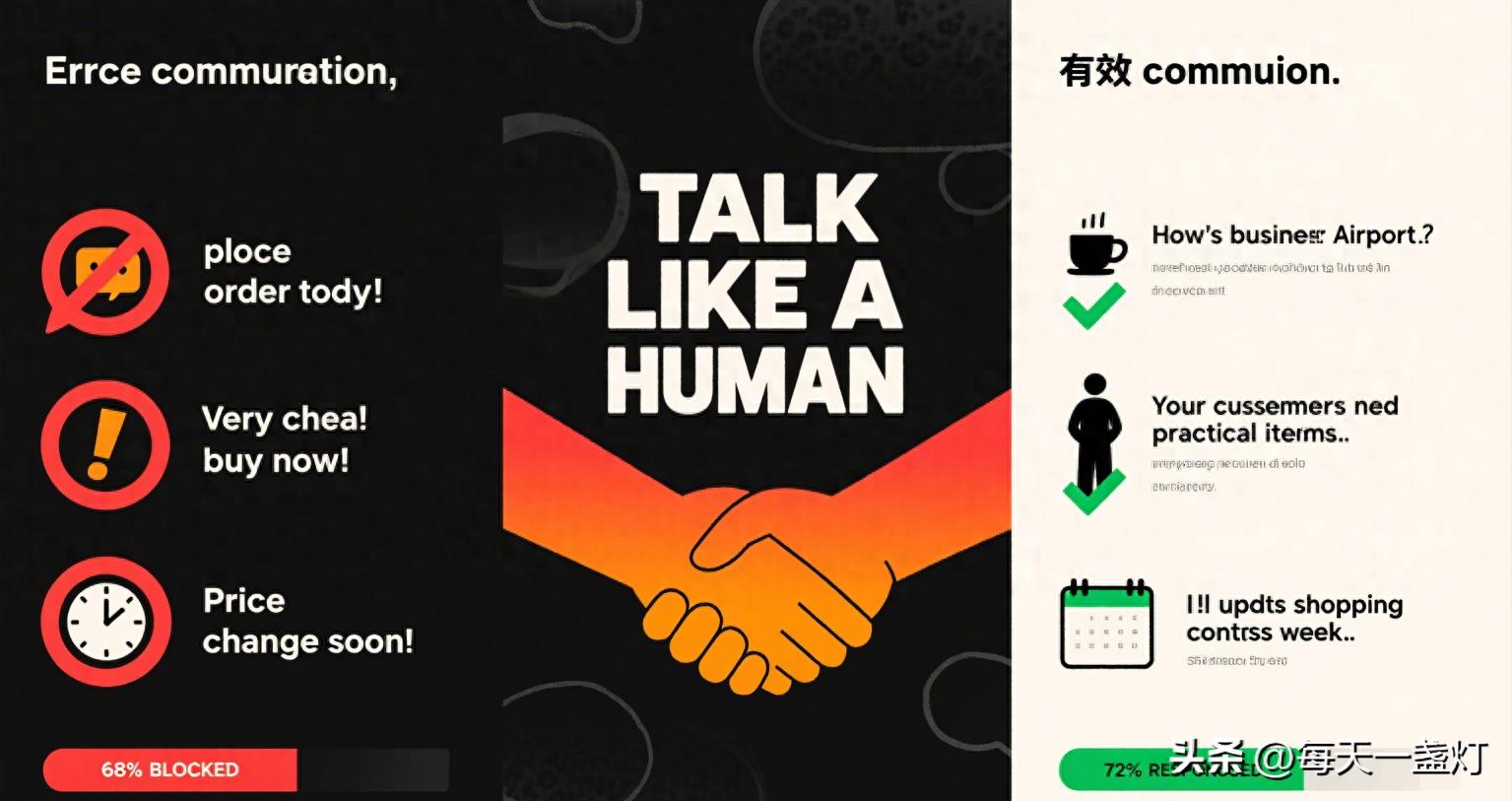有时候,我们很难判断自己是在“正常推进”,还是已经在“逼单”了。
尤其是在 WhatsApp 上聊客户时,越想成交,越容易让对方觉得有压力。
下面我用几个实操案例,帮你对照看看。
案例1:典型的“逼单”
你:Hi, did you check the price I sent?
对方:Yes, I saw it.
你:So, can you place the order today?
对方:I need some time.
你:How much time? Tomorrow ok?
聊天气氛马上变冷,对方开始慢慢不回了。
改成这样:轻松过渡
你:Hi, did you check the price I sent?
对方:Yes, I saw it.
你:Great! By the way, I remember you mentioned your shop is near the airport? Must be busy these days?
对方:Yes, many tourists are coming.
你:That’s good news. This light might actually fit well, because tourists like things compact and easy to carry.
对方:Oh really? That’s interesting.
不是催单,而是把对话带回到“对方的生活场景”,自然过渡到产品价值。
案例2:过度推销
你:This LED light is very cheap, very high quality, very useful.
对方:Ok.
你:So, do you want 500 pcs or 1000 pcs?
典型的“选择题”逼单,对方只会退缩。
改成这样:营造“被理解”
你:Many people like this LED light because it can be charged with USB, no need to worry about batteries.
对方:That’s good.
你:I guess your customers probably prefer practical things too, right?
对方:Yes, they always look for easy-to-use items.
你:Exactly. That’s why this model is quite popular.
对方会觉得“你理解我”,而不是“你逼我买”。
案例3:气氛全是交易
你:Please confirm the order soon, otherwise the price will change.
对方:… (冷场)
改成这样:像朋友,不像推销
你:Just a note, sometimes shipping costs change quickly. Don’t worry, I’ll let you know the best option when you’re ready.
对方:Thanks, that helps.
语气是“替对方考虑”,而不是“给对方压力”。
总结:怎么避免在 WhatsApp 上“逼单”?聊生活:从产品跳到对方的日常,让氛围自然。少用选择题:别问“买不买”,而是问“你的客户是不是喜欢……?”先共鸣,再推荐:先理解,再顺势提到产品。留空间:别天天追问,客户才不会觉得被催。

